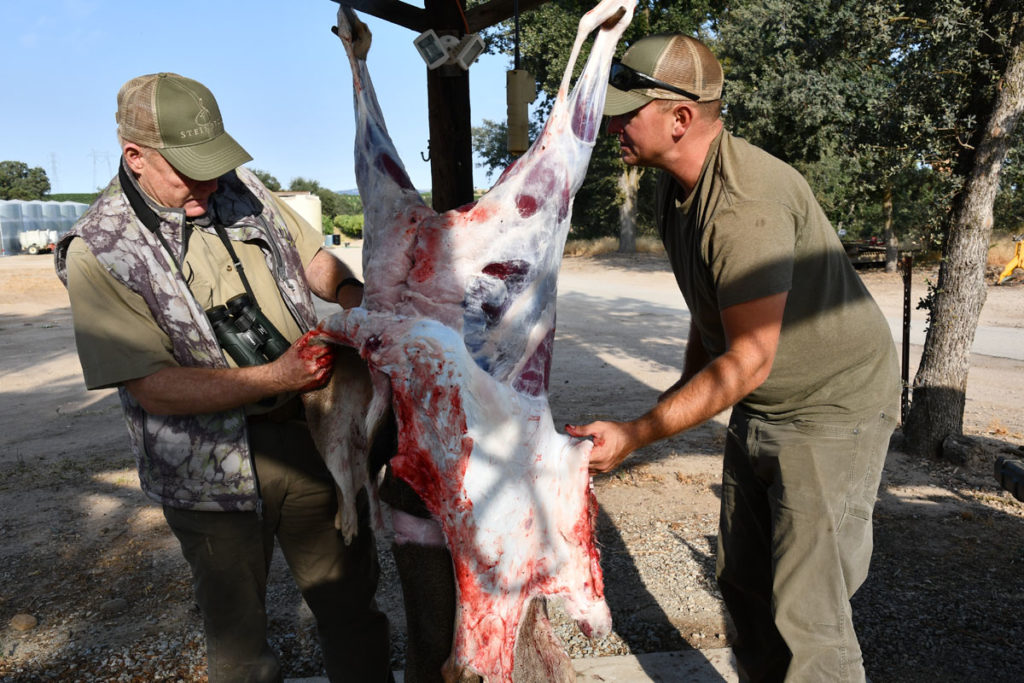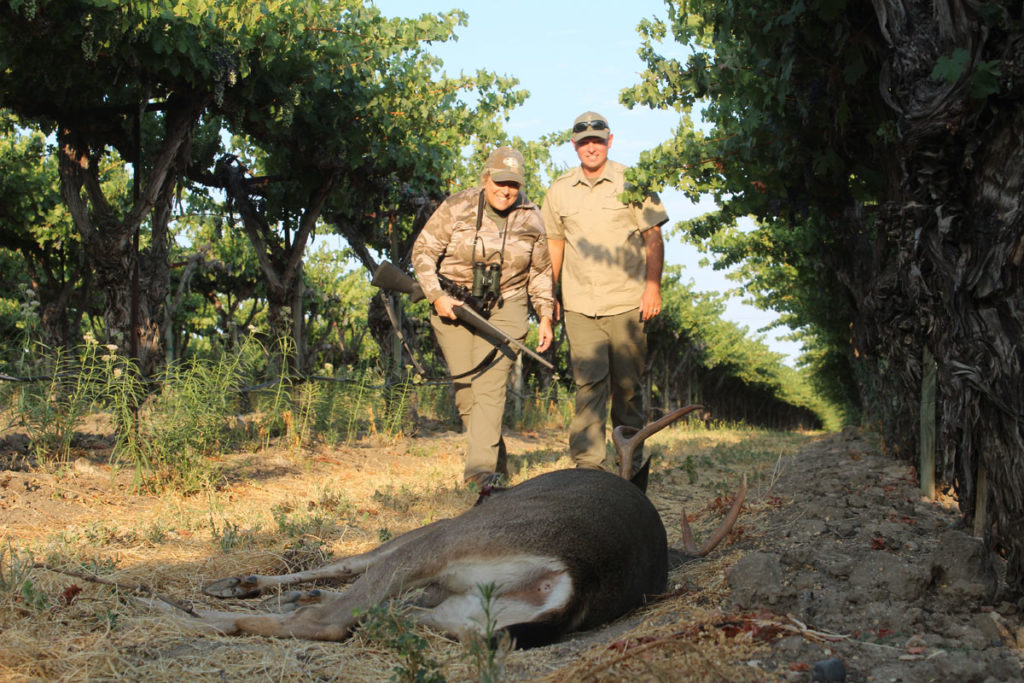
On August 11 a friend of mine from back East texted me and I responded that I was deer hunting. “Boddington,” he came back, “it’s August…around here we call that poaching!” On the surface, it seems crazy. Here on the Central Coast, August temperatures soar above 100 degrees and wildfires are headline news. Even so, it’s deer season! The “coast zone” rifle deer season opens the second Saturday in August. This year opening day was the 11th; it could open as early as August 8…but never later than the 14th. This is the earliest rifle deer season in the Lower 48!
If you get a buck a long way from a road you better carry a pack frame; the days heat up quickly, and it can become a footrace to the cooler. That said, it isn’t all that bad. Daytime temperatures are high, but humidity is low and the Central Coast has one of North America’s greatest temperatures swings, an average of 39 degrees between high and low. So if it’s 90 at noon it will be down in the 50s at dawn, and usually cools in the late afternoon.
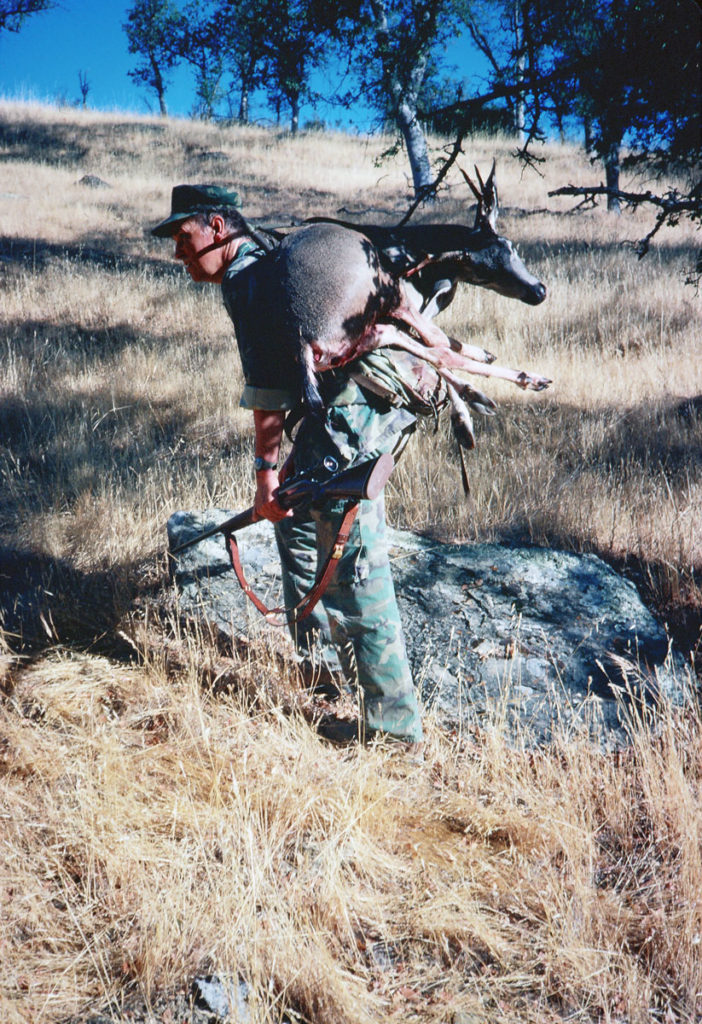
The hunting day is short; you get a few hours of deer movement in the morning and evening. There can be some daylight movement to and from water. I’ve taken a couple of good bucks at blistering noontime…but often I don’t worry about it, instead napping away the hot hours or, God forbid, getting some work done.
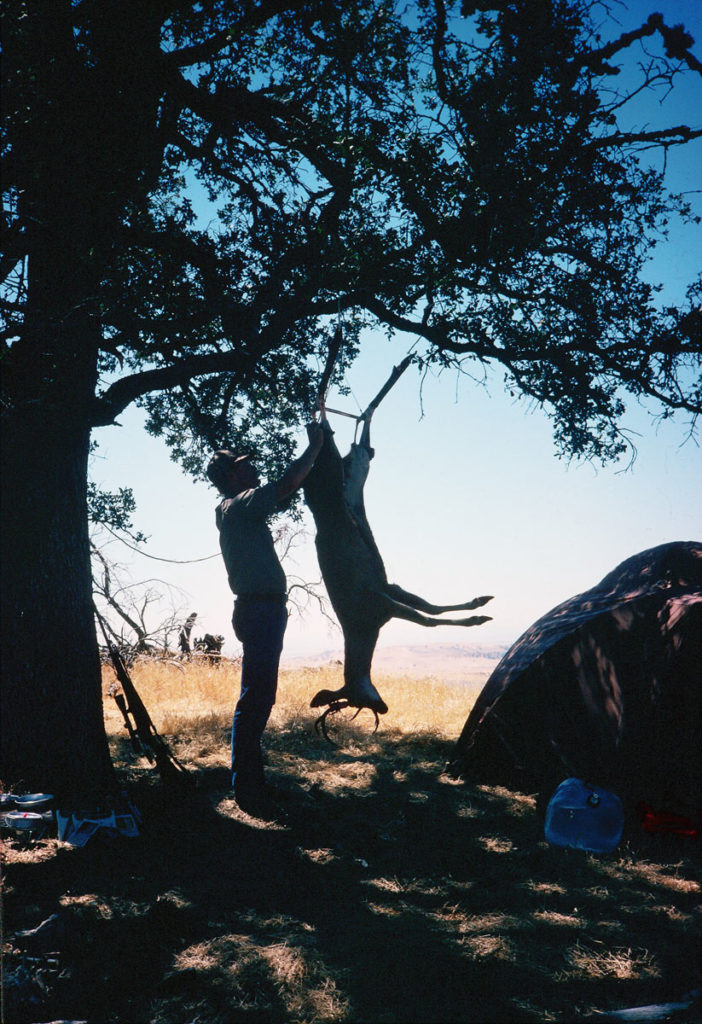
Why August?
“Because it’s always been that way.” I first hunted the Central Coast when I was a young lieutenant down at Camp Pendleton in the mid-70s. The August season had been in place for decades. Unlike much of California, the “coast zone” offers over-the-counter tags (no drawing), with a second tag available. It’s bucks only and, also long traditional, a “legal buck” must have a fork in the upper half of one antler
Much of the coastal hills are blanketed by thick chaparral brush and summers are long, hot, and dry. Deer densities are low, and antler growth is modest. At full maturity, many bucks never go past two points per side and four-point antlers are rare. Honest, the hunting is difficult enough that just about any legal buck is prized! So far this probably doesn’t sound spectacular, but along the Central Coast this is “our deer season” and we cherish it.
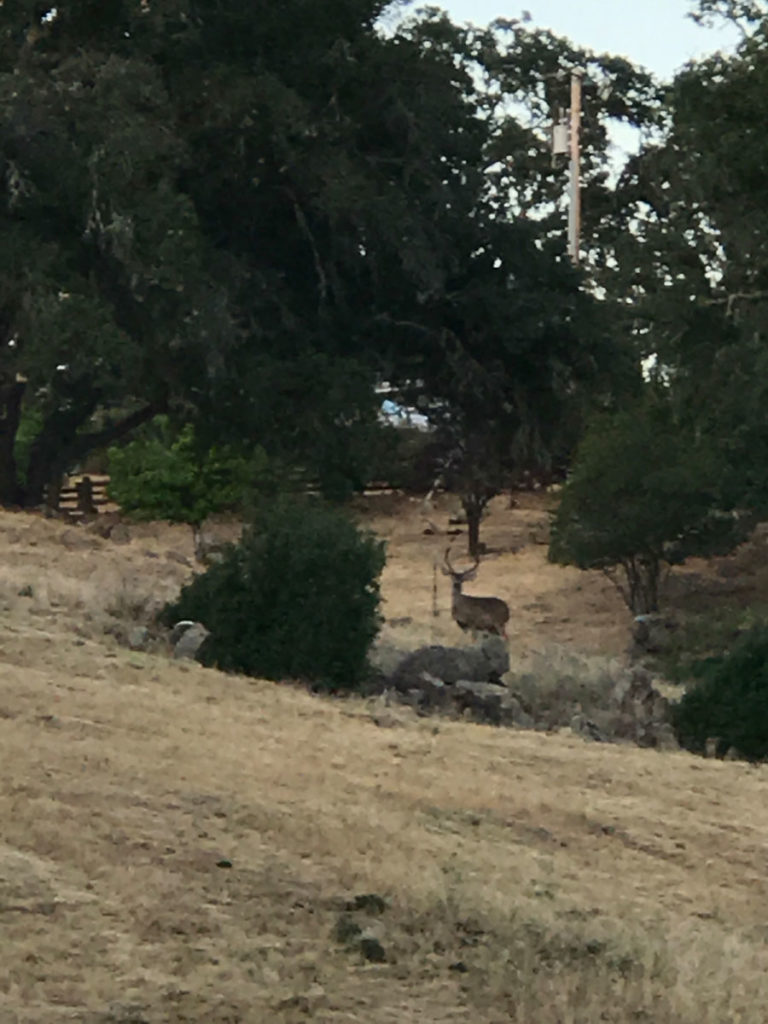
There are benefits. It’s a long rifle season, running into late September. This is important, not just for time afield but because these deer go into full rut about September 15, the earliest deer rut I know of. The tail end of our coastal season is almost certain to catch major rutting activity. These deer enjoy a mild winter, with November rains greening things up. Their major stress period is the hot, dry summer; they rut early so the fawns can be born in the mild spring.
For we coast zone deer hunters this means that the end of the season is usually the best. The weather cools down, and bucks come out of the thickets and cruise for does. The last week of the season is a time when unknown bucks appear out of nowhere; this is when some of our bigger bucks are taken. At the beginning of the season many bucks are still in velvet, but by early September most bucks are in hard antler.
Coastal Bucks
Exactly what these coastal deer are is a matter for conjecture. California has the most mule deer subspecies: Columbia blacktail to the northwest; Rocky Mountain mule deer to the northeast; California mule deer to the southeast; and the little-known southern mule deer from Orange County (below Los Angeles) south into Baja. We call our deer blacktails or “coastal blacktails.” In appearance, they are closest to Columbian blacktail, but there is California mule deer influence; in some individuals, it can be seen in ears that are a bit too big, or tails that don’t have quite enough black.
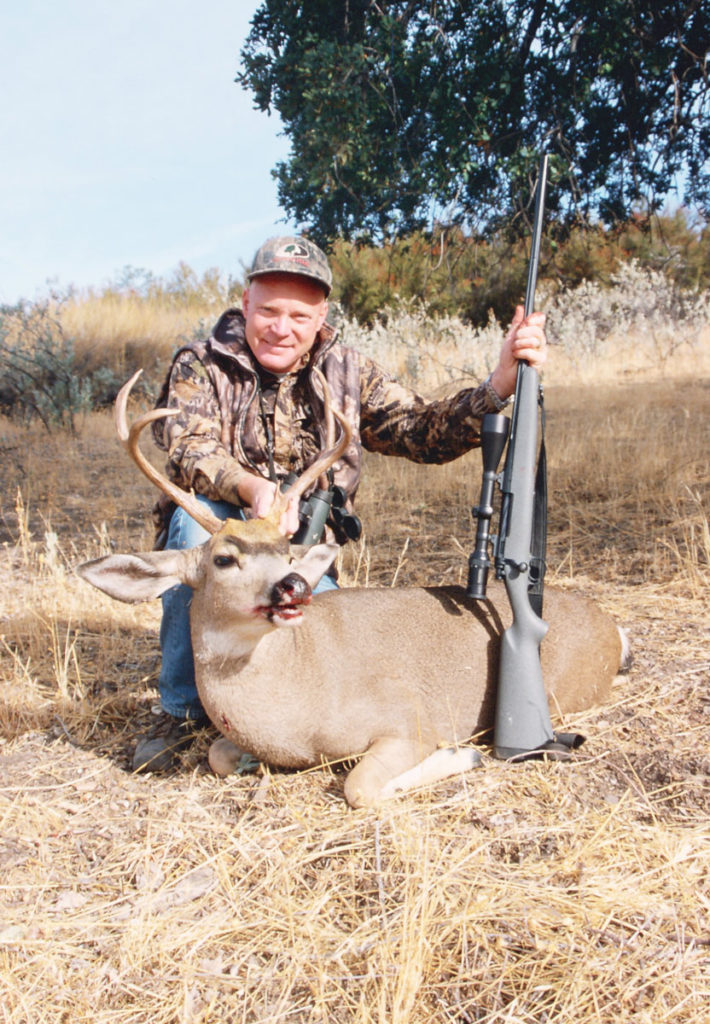
Taking the strictest approach, Boone and Crockett’s southern boundary for Columbia black-tailed deer lies to the north, so B&C considers our deer “mule deer.” Because of habitat and genetics, it’s unthinkable that one of our coastal deer could ever grow antlers large enough to be a record-class mule deer. It’s also unusual for one of our deer to achieve the Boone and Crockett minimum for Columbian Blacktail. We think of outside spreads of 17 or 18 inches as wide, and only occasional bucks reach the low 20s. Clean “four-by-fours” are very rare; our very largest bucks may be “four-by-threes,” “three-by-threes”—or even giant fork-horns.
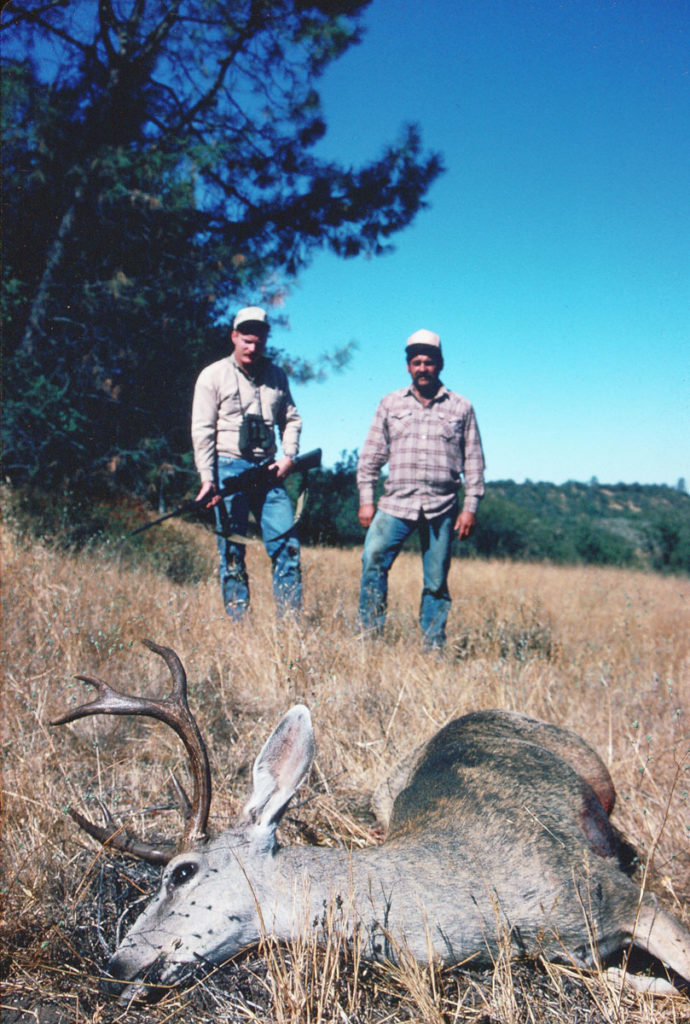
Wherever you hunt deer it’s wise to hunt them for what they are, not what you wish them to be! I doubt the deer really care what we call them, but since they received no recognition anywhere else, in their record-keeping system Safari Club International accepts them as Columbian black-tailed deer. I usually just call them “coastal blacktails” but, by any name, I like to hunt them.
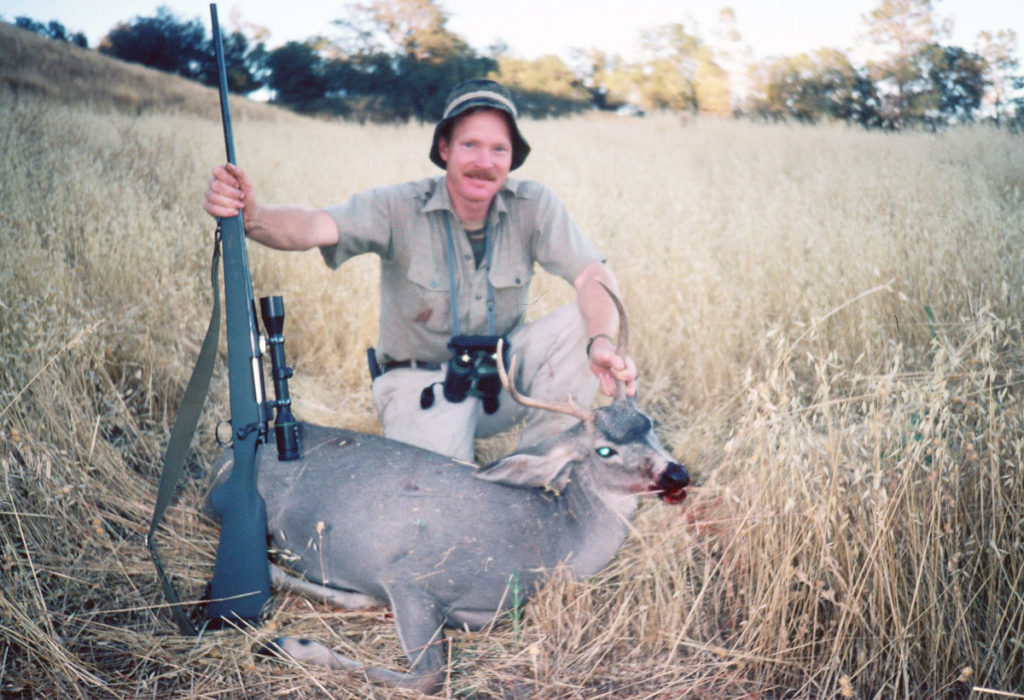
Places to Hunt.
Finding good areas to hunt these deer isn’t easy. There is plenty of National Forest nearby and some patchwork BLM, but deer densities are not high. Thanks to water and agriculture concentrations are mostly on private land. We’ve lived in the Central Coast for 25 years; like most local hunters I’ve developed access, but it comes and goes so I’ve tried it all, from public to private. We are also in the heart of California’s feral hog hunting; most of our local outfitters also offer deer hunting and control the majority of the private land tule elk tags.
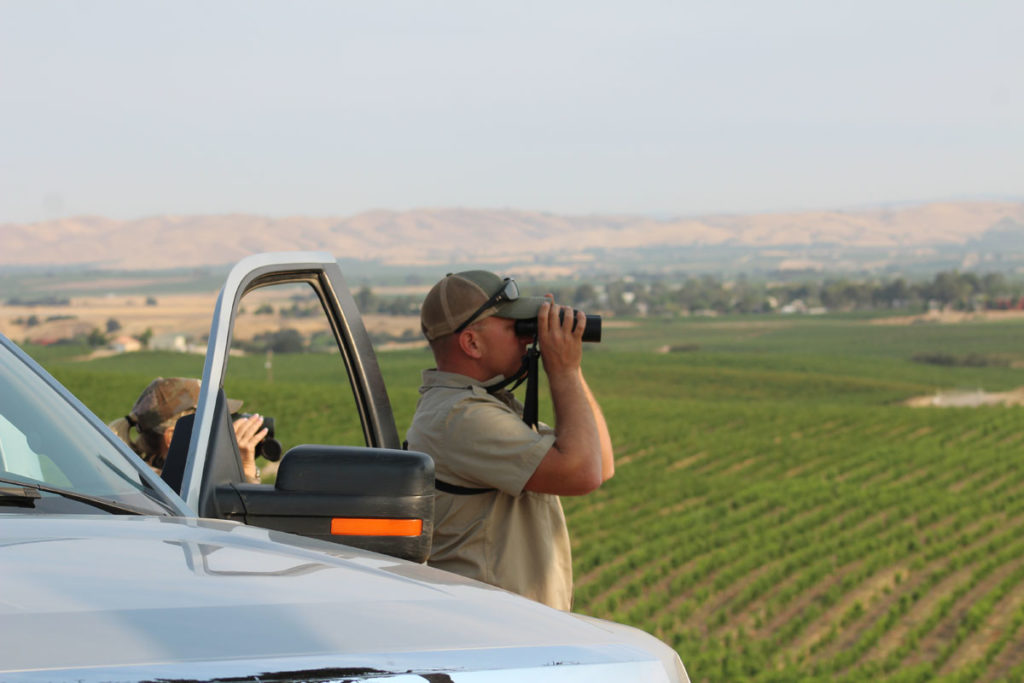
The last few decades have seen major growth in the Central Coast’s wine industry. For the 2018 deer season, Donna and I had a new and unique opportunity, joining Mossberg’s Linda Powell, Riton Optics’ Brady Speth, and fellow writers Andrew McKean and Bryce Towsley to hunt deer literally among the grapevines at Steinbeck Vineyards. Many vineyards are game-fenced, and few vintners tolerate losses from wildlife. The Steinbeck family does, managing their deer along with their grapes.
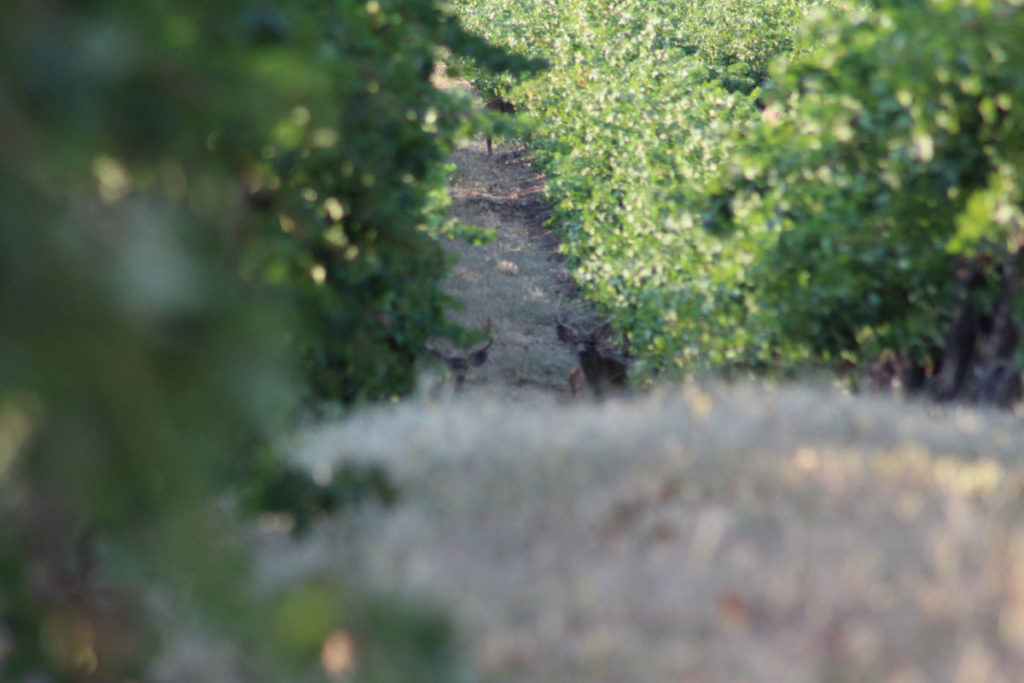
Looking for deer from row to row was different, but the deer love it, and with abundant nutrition both body and antler size are considerably bigger than what we’re used to with our local deer. Donna shot a real monster on opening morning, the rare four-by-four, still in velvet but fully formed underneath, one of the best bucks I’ve seen on the coast zone. After six days we were hoping for just one more buck to fill us out. It doesn’t get much better than that…and these vineyard deer yield some of the best venison I’ve tasted!

